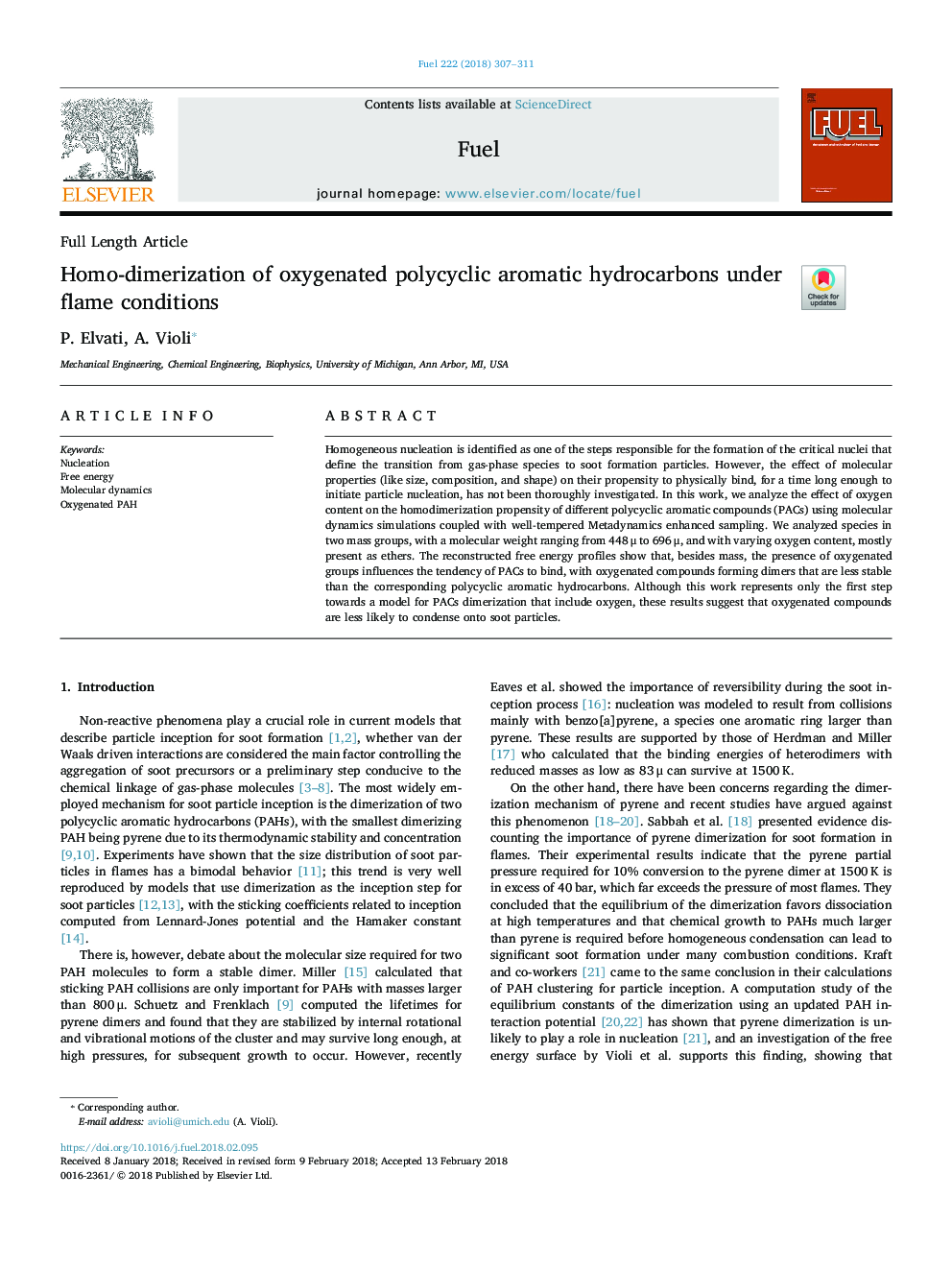| Article ID | Journal | Published Year | Pages | File Type |
|---|---|---|---|---|
| 6631495 | Fuel | 2018 | 5 Pages |
Abstract
Homogeneous nucleation is identified as one of the steps responsible for the formation of the critical nuclei that define the transition from gas-phase species to soot formation particles. However, the effect of molecular properties (like size, composition, and shape) on their propensity to physically bind, for a time long enough to initiate particle nucleation, has not been thoroughly investigated. In this work, we analyze the effect of oxygen content on the homodimerization propensity of different polycyclic aromatic compounds (PACs) using molecular dynamics simulations coupled with well-tempered Metadynamics enhanced sampling. We analyzed species in two mass groups, with a molecular weight ranging from 448â¯Î¼ to 696â¯Î¼, and with varying oxygen content, mostly present as ethers. The reconstructed free energy profiles show that, besides mass, the presence of oxygenated groups influences the tendency of PACs to bind, with oxygenated compounds forming dimers that are less stable than the corresponding polycyclic aromatic hydrocarbons. Although this work represents only the first step towards a model for PACs dimerization that include oxygen, these results suggest that oxygenated compounds are less likely to condense onto soot particles.
Related Topics
Physical Sciences and Engineering
Chemical Engineering
Chemical Engineering (General)
Authors
P. Elvati, A. Violi,
